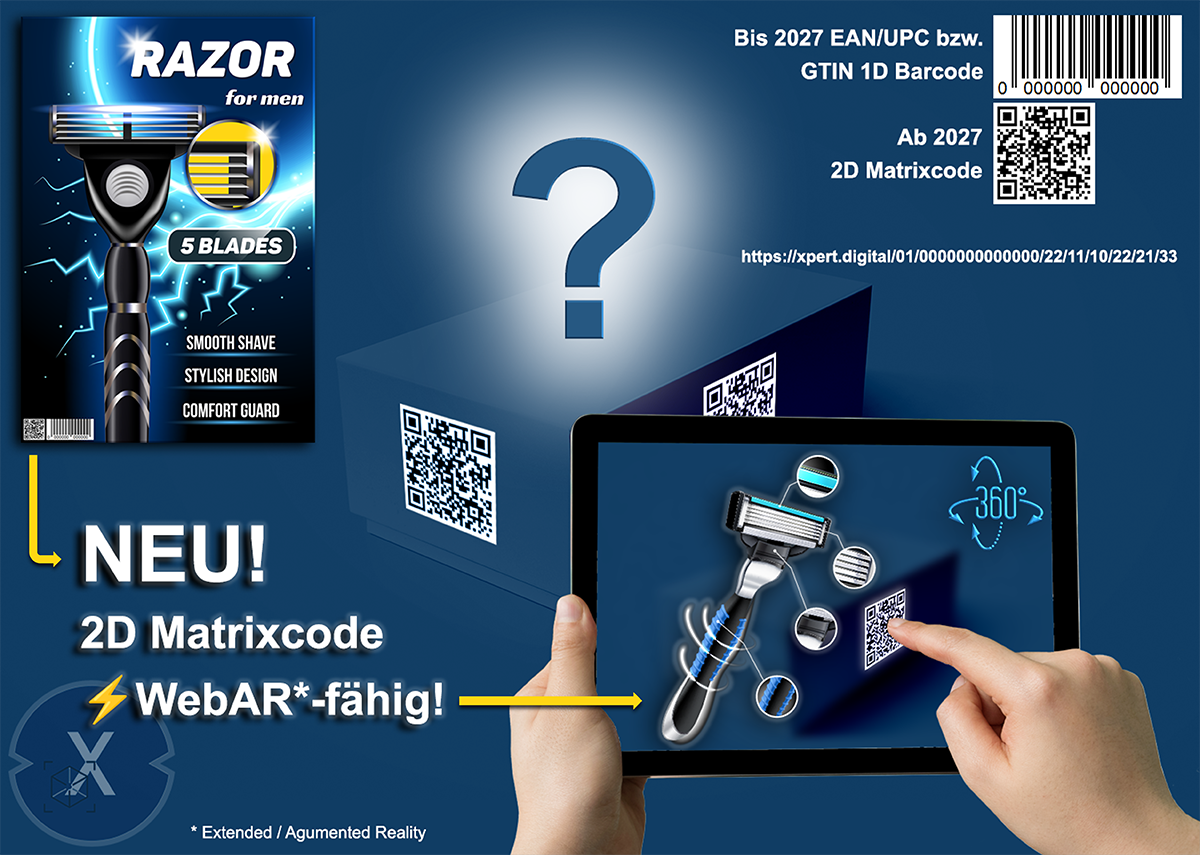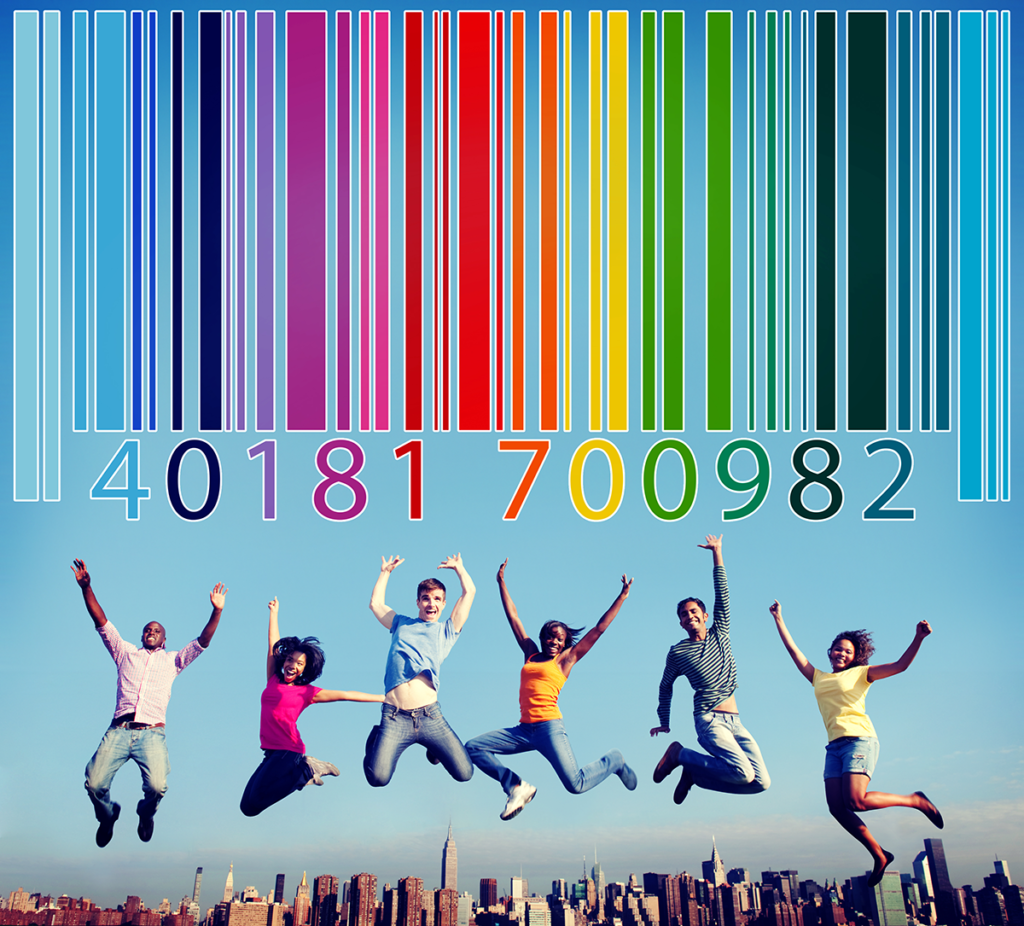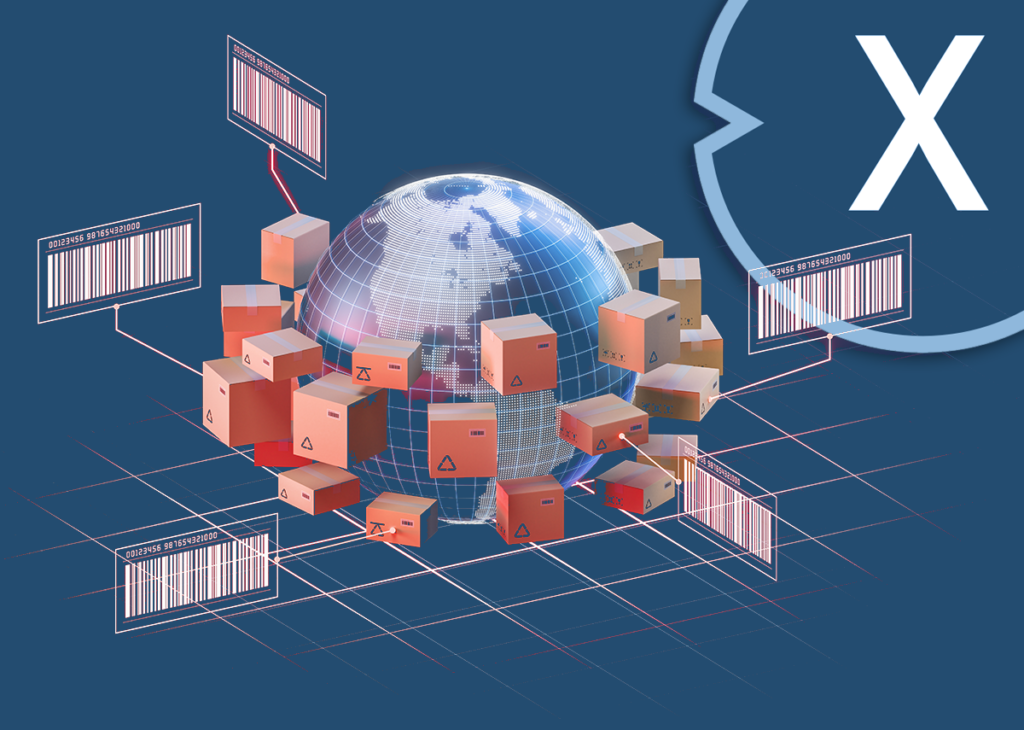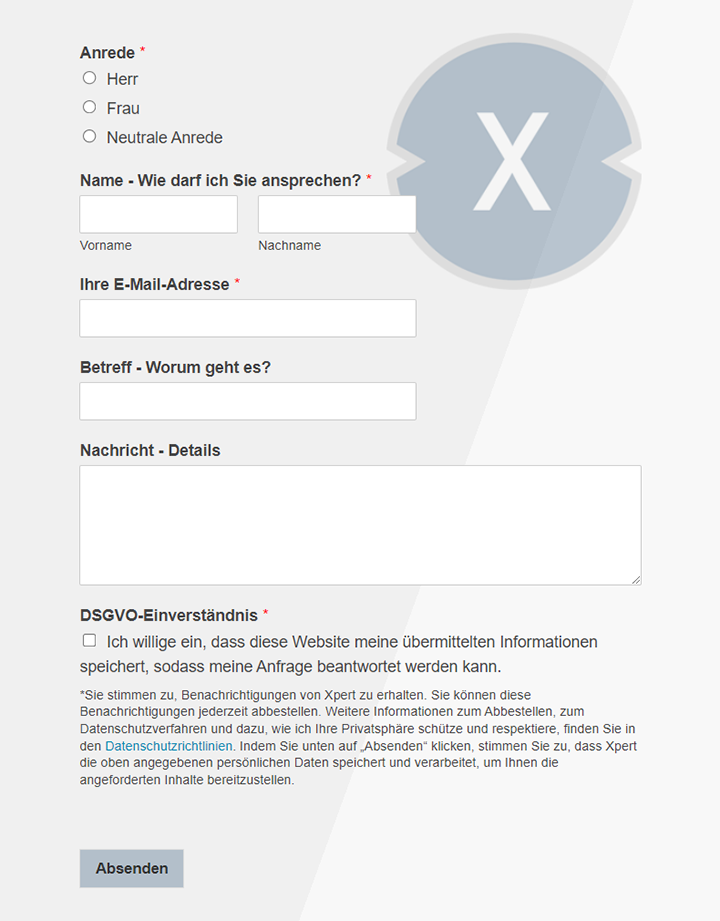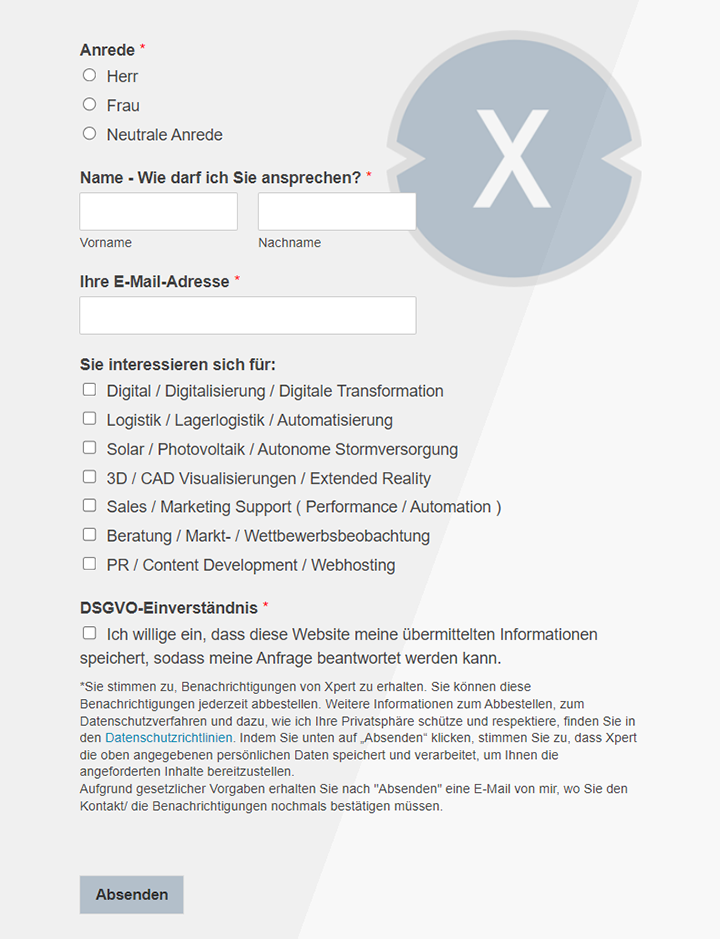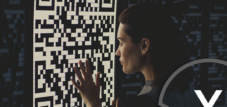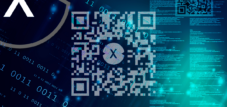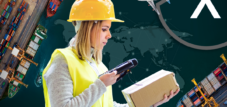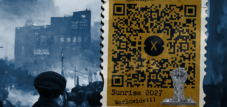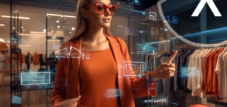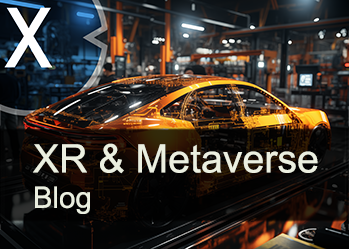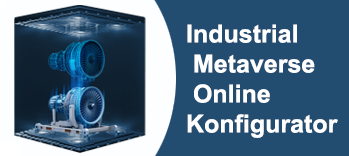2D matrix code (from 2027 successor to the EAN/UPC or GTIN 1D barcode) can also be used for WebAR or WebXR (3D)!
Language selection 📢
Published on: April 23, 2023 / update from: June 9, 2023 - Author: Konrad Wolfenstein
Quickly explained: EAN, UPC, GTIN and matrix code
EAN (European Article Number), UPC (Universal Product Code) and GTIN (Global Trade Item Number) are all names for 1D barcodes used to store and read information about products.
UPC and EAN barcode standards were developed to efficiently capture and process product information. Both standards use a combination of numbers and dashes to encode information about products. UPC barcodes are primarily used in the USA and Canada, while EAN barcodes are used worldwide.
GTIN is a globally uniform standard for identifying trading units and logistics units. It is used to identify products and services and is an internationally recognized identifier. GTIN is a number that allows a product to be uniquely identified. The GTIN is available in different forms, such as GTIN-8, GTIN-12, GTIN-13 and GTIN-14, which contain different numbers of digits depending on the user's needs.
2D matrix codes, such as QR codes, can store a much larger amount of data than 1D barcodes, making them particularly useful for applications such as mobile payments, marketing and advertising. 2D matrix codes contain a lot of information in a smaller area than 1D barcodes and can also be used to encode information in various ways, such as text, URLs and multimedia files. 2D matrix codes are capable of storing both 1D and 2D barcodes and are therefore a more powerful way of encoding product information.
This is how it all started in 1973
The EAN code was introduced in 1977 by the European Article Numbering Association (now GS1) to establish a uniform barcode standard in Europe. The UPC codes were developed and introduced in the United States in 1973 by the Uniform Product Code Council (now GS1 US) to improve automated retail checkout processing.
Over the years, the EAN and UPC codes have become the most commonly used barcodes worldwide, and today they are used by many companies and organizations worldwide to identify and track products and information.
Difference between UPC and EAN (GTIN)
The EAN code is compatible with the Universal Product Code, but encodes one more character. Most retail chains now also accept EAN-13 in the USA and Canada. Due to the different package sizes and languages, many international consumer goods companies use the UPC-A barcode for North America, but use the EAN-13 in the rest of the world. The term “UPC code” is often used in trade and language, but the correct name is now GTIN-12.
Until 2009, the GTIN was still called EAN (short for European item number). So EAN and GTIN mean the same thing. The term GTIN only replaced the EAN used in Europe in 2009.
GS1 and GTIN
GS1 is a global, nonprofit organization dedicated to the development and implementation of supply chain standards and solutions. The organization was founded in 1977 and is headquartered in Brussels, Belgium.
GS1 works with companies and organizations around the world to ensure products and information can be communicated consistently and efficiently throughout the supply chain. GS1's standards cover product, location and asset identification, data collection and electronic communication in the supply chain.
GS1's most well-known products are the EAN-13 barcodes, which can be found on almost all retail products worldwide. GS1 also operates the Global Data Synchronization Network (GDSN), which enables companies to synchronize and exchange product data on a global scale.
GS1 is a membership organization whose members include companies from various industries such as retail, pharmaceuticals, transport and logistics, automotive and healthcare.
The GTIN is a 14-digit number that can be represented in various barcode formats, including EAN-13, UPC and GS1-128. The GTIN is a number developed by GS1 and is part of the GS1 system.
GS1 also issues the manufacturer identification numbers (GS1 Company Prefix), which are part of the GTIN. The GS1 Company Prefixes enable manufacturers to identify and track their products around the world. In addition, GS1 also offers various services to help companies implement GS1 systems and standards.
Overall, GTIN and GS1 are closely related because GTIN is an important part of the GS1 system and was developed by GS1.
EAN was renamed GTIN
EAN is part of the GS1 system and was developed by GS1 to enable uniform identification of trading entities (such as products and services) in Europe.
In 2005, EAN was officially integrated into the GS1 system and renamed GTIN (Global Trade Item Number) with 13-digit barcode formats. GTIN is now the international standard for trade item identification developed by GS1 and can be represented in various barcode formats such as EAN-13, UPC and GS1-128.
Although the term “EAN” is no longer used today, the term is sometimes still used in connection with the identification of products in Europe because it was widespread in the past.
The introduction of the barcode in 1973 revolutionized global logistics
The barcode has revolutionized global logistics in several ways:
Improved inventory management
By using barcodes, companies can manage their inventory more effectively. Each product is tagged with a unique barcode that can be scanned to automatically update inventory. This enables faster and more accurate inventory taking and reduces the risk of overstocking or understocking.
More efficient distribution of goods
Barcodes help to speed up the flow of goods and reduce the error rate. When each product is barcoded, shipping labels can be printed quickly and easily, speeding up the processing of orders and reducing the risk of shipping errors.
Improved traceability
Barcodes allow companies to track the whereabouts of products in the supply chain, from production to sale. This is particularly important when tracking products in the event of recalls or product quality issues.
Automation of business processes
The use of barcodes has helped automate business processes by reducing manual data entry and enabling the use of automated scanners and readers. This has led to greater efficiency and productivity in the logistics industry.
Overall, the barcode has revolutionized the logistics industry by enabling faster, more efficient and more precise processing of goods. Technology has helped increase productivity and reduce costs, which in turn has led to higher customer satisfaction and business competitiveness.
Where are 1D bar codes deployed and used?
1D bar codes are used in a variety of industries and applications. Here are some examples of using 1D bar codes. The possible applications are almost unlimited.
retail trade
1D bar barcodes are commonly used on retail products to store item number, price and other information.
logistics
1D bar codes are used in the supply chain to track and identify products in transit.
Healthcare
1D bar codes are used in medication management and patient identification.
Libraries
1D bar codes are used to track books and other media in libraries.
production
1D bar codes are used to track parts and components in manufacturing.
food industry
1D bar codes are used in the food industry for product traceability and regulatory compliance.
Government
1D bar codes are used to manage government documents and identify people.
Entertainment
1D bar codes are used to identify tickets for concerts, sporting events and other events.
How the GS1 Data Link works for product discovery and web capability
GS1 Data Link is a standardized data format developed by the international GS1 organization. It is used to store and exchange information about products and their identifying features. GS1 Data Link enables companies to electronically exchange information about their products and goods flows, improving the efficiency and accuracy of business processes.
Product recognition is achieved through the use of GS1 standard identification numbers (Global Trade Item Numbers, GTINs). Each product receives a unique GTIN consisting of 8, 12, 13 or 14 digits and based on the EAN/UPC code structure. This number is placed on the product itself and on the packaging and serves as a unique key to identify the product in the supply chain.
If a company wants to share data about a product, it can format that data in GS1 Data Link and send it to other companies. This data may include, for example, product descriptions, images, prices, supplier information or information about the origin of the product. Companies can also use GS1 Data Link to share information about the status of orders, deliveries and inventory.
Using GS1 Data Link and GTINs standardizes and simplifies product identification and data exchange in the supply chain, resulting in better efficiency and accuracy of business processes.
GS1 Data Link is web-enabled and can also be used for WebAR (Web-based Augmented Reality).
The GS1 Data Link can be exchanged over the Internet or web applications in various formats, including XML, JSON or EDI (Electronic Data Interchange).
WebAR is a technology that makes it possible to experience augmented reality content over the web without the need for a dedicated app. Companies can use GS1 Data Link to store product data and product images and use them on web pages or in WebAR experiences. For example, companies can use GS1 Data Link to place QR codes or other types of identification codes on their products. When a customer scans this code with their smartphone, they can access the stored information and even WebAR experiences.
By using GS1 Data Link in conjunction with WebAR, companies can provide a rich and interactive shopping experience and give their customers a better understanding of products. Additionally, by using GS1 Data Link and WebAR, companies can measure and analyze the success of their campaigns to optimize their marketing strategies.
The GS1 Data Link is not yet a 2D matrix code!
The GS1 Data Link is a standardized data format used to store and exchange information about products and their identifying features. However, GS1 Data Link can be used in conjunction with various types of barcodes, including 2D matrix codes, to store and identify information about products.
The GS1 organization has developed various types of barcodes, including the well-known EAN code, which can be found on most products worldwide. A 2D matrix code is a barcode that stores information in two dimensions, as opposed to a traditional barcode that stores information in only one dimension. 2D matrix codes can store more data than traditional barcodes, and they can also be placed in smaller areas.
Using GS1 Data Link in conjunction with barcodes enables quick and accurate identification of products in the supply chain, improving the efficiency and accuracy of business processes.
How does the GS1 Data Link work in combination with a matrix code?
The GS1 Data Link can be used in combination with a matrix code to store and exchange information about a product. Here's an example of how this could work:
Suppose a company wants to store and exchange information about a specific product in the supply chain. First, the company would put the product data into the standardized GS1 Data Link format, which can contain information such as product descriptions, images, prices, supplier information or information about the origin of the product. This data would then be tagged with a unique Global Trade Item Number (GTIN) associated with the product.
Next, the company would print the GS1 standard matrix code, such as the DataMatrix code, on the product. The matrix code contains the GTIN number and may additionally contain information such as the batch number or the expiry date of the product. When a customer scans the matrix code with their smartphone, they can access the information stored in GS1 Data Link.
As the product moves through the supply chain, companies can use the matrix code to quickly and easily access information about the product. Using GS1 Data Link in conjunction with matrix codes allows companies to store and exchange product information in a standardized and efficient manner, improving the efficiency and accuracy of business processes.
Advantages and possible applications for potential customers

See products and details via WebAR and matrix code – Image: Xpert.Digital / Zapp2Photo|Shutterstock.com
See things and details that were previously not visible due to the packaging, outer box or other obstructions!
Product Information
Consumers can scan the matrix code with their smartphone to get detailed information about a product, such as: B. its origin, nutritional information or instructions for use.
Authentication
Manufacturers can use the Matrix Code and GS1 Data Link to authenticate their products and give consumers peace of mind that they are purchasing a genuine product.
marketing
WebAR allows manufacturers to display digital content such as 3D models or animations directly on the consumer's smartphone or tablet screen. This can create an interactive and engaging brand experience and increase sales.
Traceability
Consumers can scan the code to track the traceability of products in the supply chain, improving transparency and increasing brand trust.
sustainability
Consumers can scan the code to receive information about the sustainability of products and their production, such as: B. whether the product is recyclable or made from sustainable materials.
In 2027, the data matrix code or QR code will replace the barcode
Consulting, planning and implementation of 2D matrix codes with integrated augmented reality and WebAR
Xpert.Plus is a project from Xpert.Digital. We have many years of experience in supporting and advising on (Extended) Augmented Reality and in warehouse optimization , which we bundle in a large network under Xpert.Plus .
I would be happy to serve as your personal advisor.
You can contact me by filling out the contact form below or simply call me on +49 89 89 674 804 (Munich) .
I'm looking forward to our joint project.
Xpert.Digital – Konrad Wolfenstein
Xpert.Digital is a hub for industry with a focus on digitalization, mechanical engineering, logistics/intralogistics and photovoltaics.
With our 360° business development solution, we support well-known companies from new business to after sales.
Market intelligence, smarketing, marketing automation, content development, PR, mail campaigns, personalized social media and lead nurturing are part of our digital tools.
You can find out more at: www.xpert.digital – www.xpert.solar – www.xpert.plus



